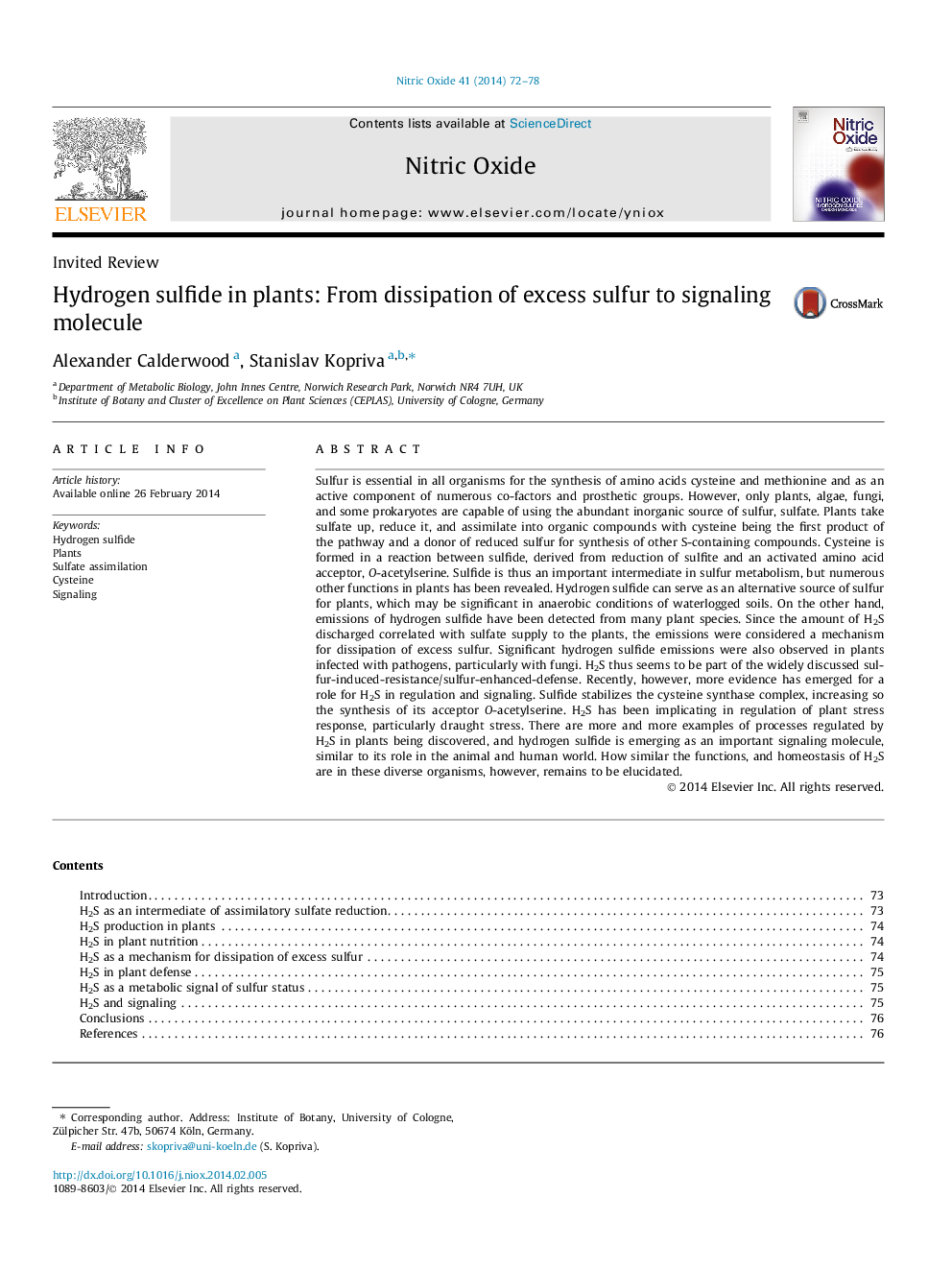| کد مقاله | کد نشریه | سال انتشار | مقاله انگلیسی | نسخه تمام متن |
|---|---|---|---|---|
| 2000678 | 1541618 | 2014 | 7 صفحه PDF | دانلود رایگان |
• Hydrogen sulfide is well established as a gaseous signal transmitter in human and animal systems.
• In plants the signaling role of H2S emerged recently as a rapidly growing field.
• The most important role of H2S in plants is an intermediate in sulfate assimilation.
• The mechanisms of function of H2S in plant signaling are still far from understood.
Sulfur is essential in all organisms for the synthesis of amino acids cysteine and methionine and as an active component of numerous co-factors and prosthetic groups. However, only plants, algae, fungi, and some prokaryotes are capable of using the abundant inorganic source of sulfur, sulfate. Plants take sulfate up, reduce it, and assimilate into organic compounds with cysteine being the first product of the pathway and a donor of reduced sulfur for synthesis of other S-containing compounds. Cysteine is formed in a reaction between sulfide, derived from reduction of sulfite and an activated amino acid acceptor, O-acetylserine. Sulfide is thus an important intermediate in sulfur metabolism, but numerous other functions in plants has been revealed. Hydrogen sulfide can serve as an alternative source of sulfur for plants, which may be significant in anaerobic conditions of waterlogged soils. On the other hand, emissions of hydrogen sulfide have been detected from many plant species. Since the amount of H2S discharged correlated with sulfate supply to the plants, the emissions were considered a mechanism for dissipation of excess sulfur. Significant hydrogen sulfide emissions were also observed in plants infected with pathogens, particularly with fungi. H2S thus seems to be part of the widely discussed sulfur-induced-resistance/sulfur-enhanced-defense. Recently, however, more evidence has emerged for a role for H2S in regulation and signaling. Sulfide stabilizes the cysteine synthase complex, increasing so the synthesis of its acceptor O-acetylserine. H2S has been implicating in regulation of plant stress response, particularly draught stress. There are more and more examples of processes regulated by H2S in plants being discovered, and hydrogen sulfide is emerging as an important signaling molecule, similar to its role in the animal and human world. How similar the functions, and homeostasis of H2S are in these diverse organisms, however, remains to be elucidated.
Journal: Nitric Oxide - Volume 41, 15 September 2014, Pages 72–78
